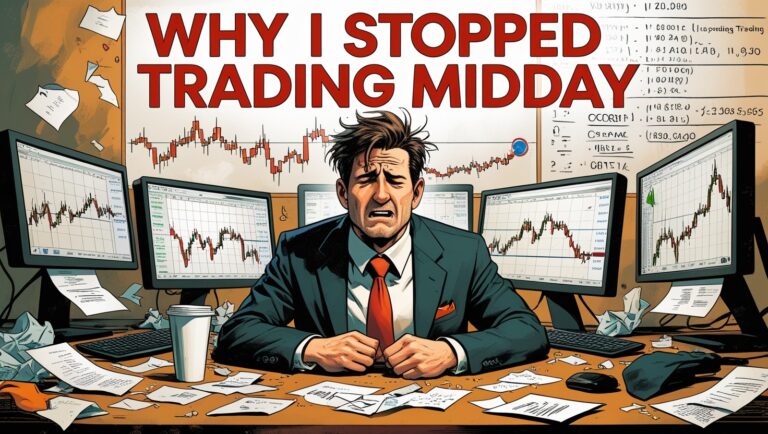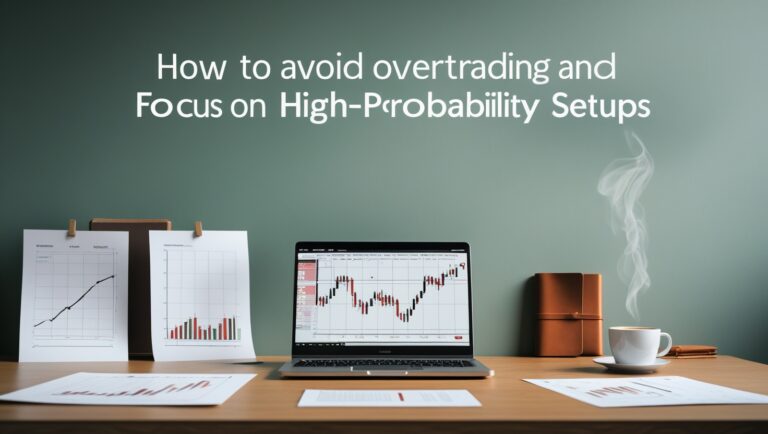How I Built a Trading Routine That Fits Around My Life
How I Built a Trading Routine That Fits Around My Life
Trading Should Work for You — Not the Other Way Around
When I first started trading, I thought I had to be glued to the screen all day. I followed everyone’s alerts, bounced from one setup to another, and felt like I was living inside the market. But all that noise didn’t make me profitable — it made me stressed and inconsistent.
What changed everything for me? I built a trading routine that works around my life, not against it. I don’t trade all day, I don’t chase alerts, and I still manage to pay my bills with stocks — because I follow a system that actually fits my lifestyle.
If you want to learn how I do it, I break it all down in my ebook:
👉 How I Pay My Bills Trading Stocks

Table of Contents
Why I Had to Change My Approach
The truth is, I have a life outside of trading. And maybe you do too. Whether it’s a job, family, or other responsibilities, sitting at the screen for 6 hours a day just isn’t realistic — or necessary. I realized I didn’t need to trade more to make money. I just needed to trade smarter.
My Routine Is Built on Simplicity
Here’s how I simplified my routine to fit my life:
- I only trade in the morning, during the first 30–60 minutes of market open.
- I prepare before 9:30AM, building a tight watchlist of no more than 6 stocks.
- I only enter trades that match my clean setups, no guessing, no chasing.
- I walk away once I’ve hit my goal or my setups are done.
This approach gives me structure, consistency, and freedom.
I Pick My 6 Stocks Before the Bell
Instead of scanning all day or reacting to alerts, I focus on stocks that are already showing movement pre-market. I look for volume, news, and key levels — and that’s it. I don’t need 20 tickers. I need 6 solid names that fit my strategy.
I break this process down step-by-step in my ebook (including what tools I use):
👉 Grab it here
It’s About Focus, Not Time
Most people think you need 10 screens and 8 hours to be a serious trader. That’s just not true. I spend more time planning and reviewing than I do actually trading. Because when I’m prepared, I don’t need to watch every candle. I wait, execute, and move on with my day.
What I Avoid to Stay Consistent
- I don’t follow anyone’s alerts
- I don’t use complicated indicators
- I don’t jump in just because something is moving
- I don’t force trades if my setup isn’t there
I’ve learned that the less I do, the more I make — because I’m only taking high-quality setups.
How This Routine Changed My Results
Once I started trading this way, everything changed:
- My win rate improved
- My losses got smaller
- I stopped overtrading
- And I actually started to enjoy trading again
Trading doesn’t have to consume your life. You can make money and still have time for what matters — but only if you have a routine that supports that.
You Can Do the Same
If you’re tired of feeling overwhelmed, chasing alerts, or staring at charts all day, I promise: there’s a better way. My ebook shows you how I built this system and how I use it every day to trade with confidence and purpose.
I Had to Be Honest About My Schedule
When I tried to trade full-time while handling everything else in my life, it didn’t work. I was tired, distracted, and not focused. That’s when I realized I needed to be honest about how much time I could truly dedicate — and build a system that respected my lifestyle.
I Found My Edge in Simplicity
The more I simplified my trading, the better my results became. I stopped switching strategies every week. I focused on one style, one routine, and one core setup. That’s what gave me clarity and consistency. Simple works, especially when time is limited.
No More Chasing Every Opportunity
Before, I thought I had to catch every hot stock to make money. That mindset burned me out. Now, I’m comfortable letting trades go if they don’t fit my criteria. I don’t chase — I wait. And that change has made all the difference.
My Routine Starts the Night Before
Every night, I review charts and scan the market. I write down key levels, check for news, and build my watchlist in advance. That way, when I sit down in the morning, I’m not guessing. I already know what I’m looking for.
I Avoid Information Overload
I used to follow too many traders, too many alerts, and too many opinions. Now I keep it tight. A few solid sources. One strategy. My focus is razor sharp because I’ve cut out all the noise. And that’s how I stay consistent.
I Trade What I Understand
I don’t touch options, crypto, or penny stocks just because they’re moving. I trade what I know: momentum stocks with news, using price action and clean setups. That allows me to stay in control and reduce surprises.
I Have Non-Negotiables
Every morning, I must have a clear mind, a clean workspace, and my plan ready. No exceptions. If I can’t give trading my full attention in that window of time, I don’t trade. It’s that level of discipline that protects my account.
Life Doesn’t Revolve Around Trading Anymore
There was a time when trading ruled my day. Now, trading fits into my life. I built it this way on purpose. I trade my plan, take my profits, and log off. I have time for my family, my goals, and my peace of mind.
Small Wins Add Up
I don’t need a massive trade every day. I aim for consistent wins and tight risk. That $100 or $200 a day adds up fast — especially when it’s repeatable. It’s not about big wins. It’s about dependable results.
I Track My Routine Weekly
Every week, I review how well I followed my process. Did I take clean setups? Did I rush entries? I track these habits, not just my P&L. Because the routine is what leads to profits — not just the trade itself.
This Routine Works for Real Life
If you have a full-time job, kids, or other responsibilities, you don’t need to give up on trading. You just need a routine that works around your life. I built mine through trial and error, and now I share it in my ebook.
👉 Get my routine in detail here
Consistency Beats Hustle
You don’t need to hustle the charts all day to win. You need structure. You need focus. And you need a plan that you can repeat weekly. That’s what I teach — not hype, not signals, just real strategy that fits real life.

Stay ahead in the stock market! Subscribe to our newsletter and receive exclusive stock flow reports, trading insights, and actionable tips directly in your inbox. Join thousands of traders who get our updates first.







